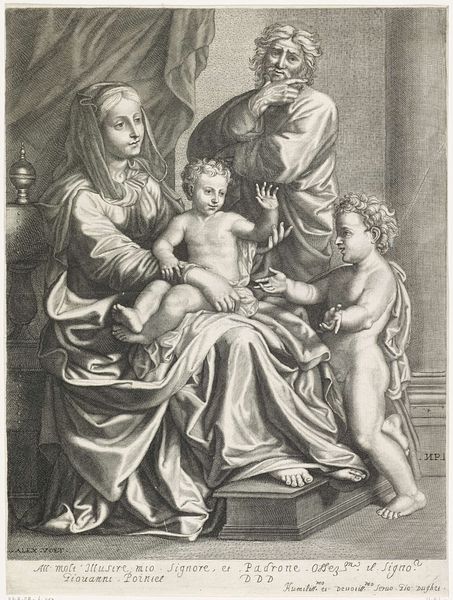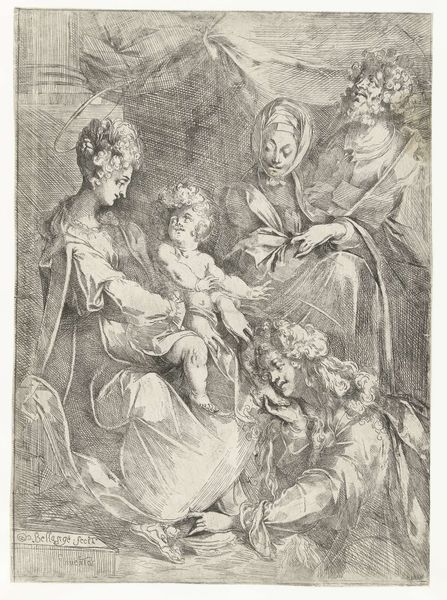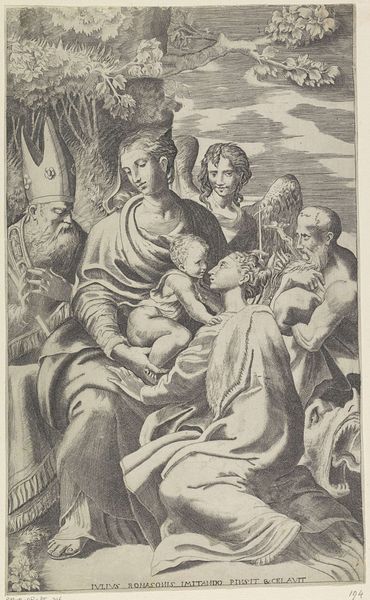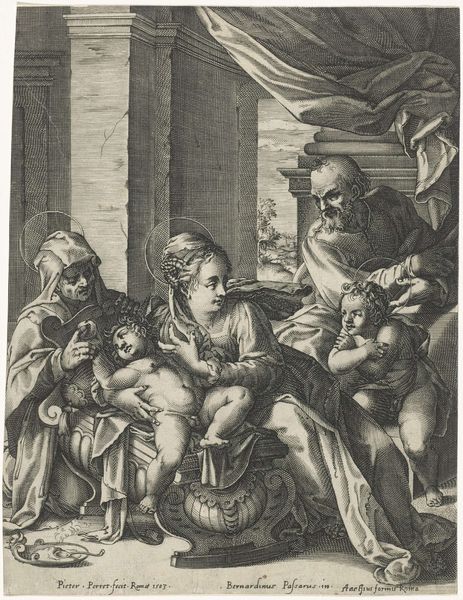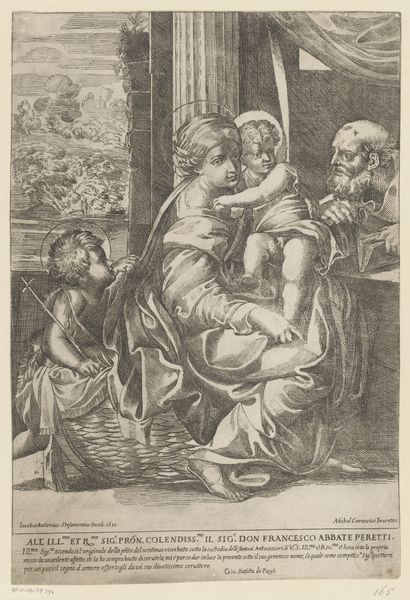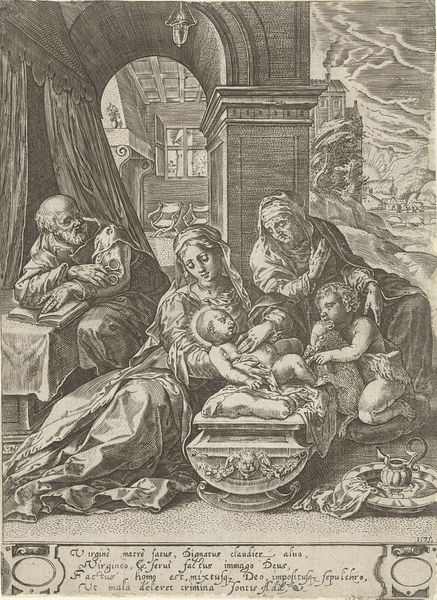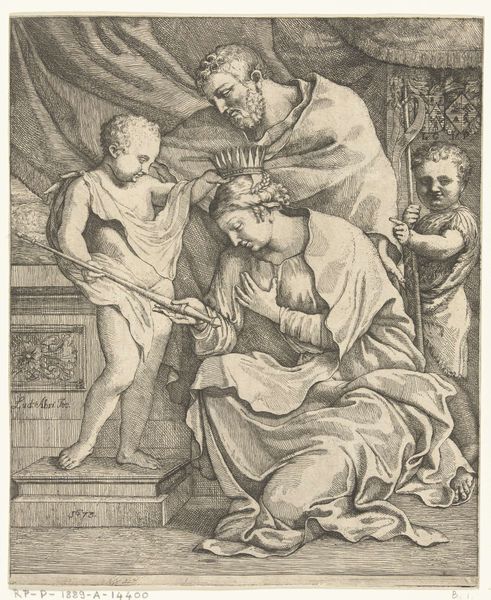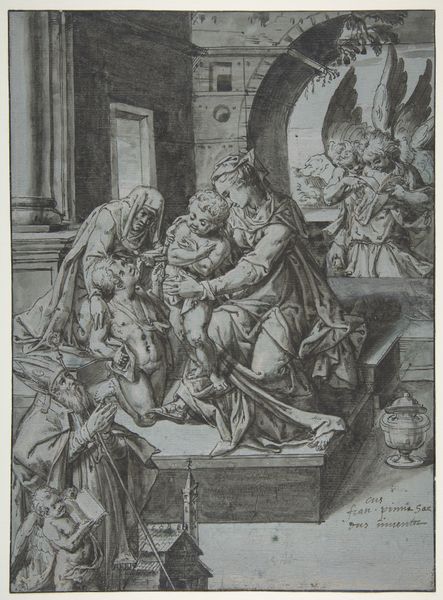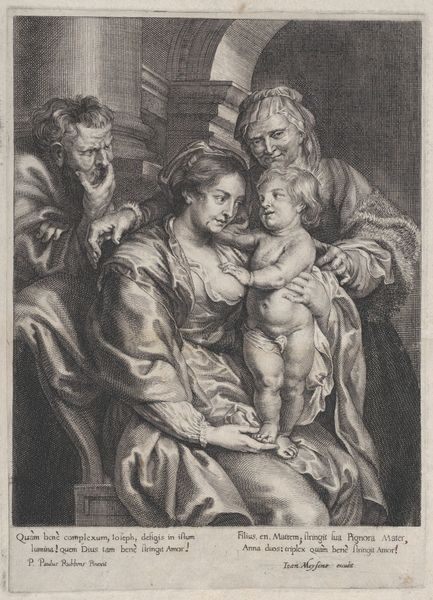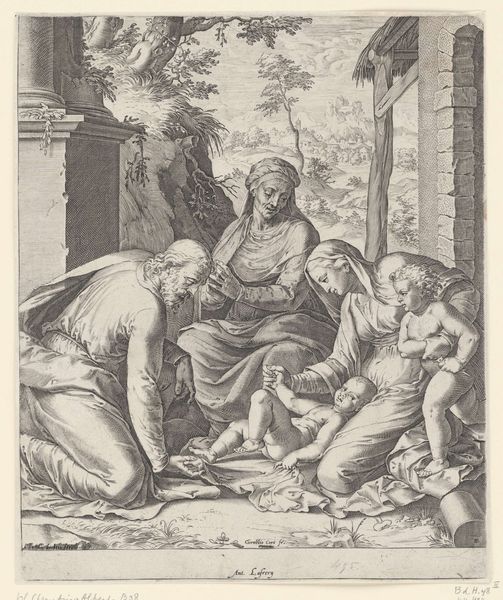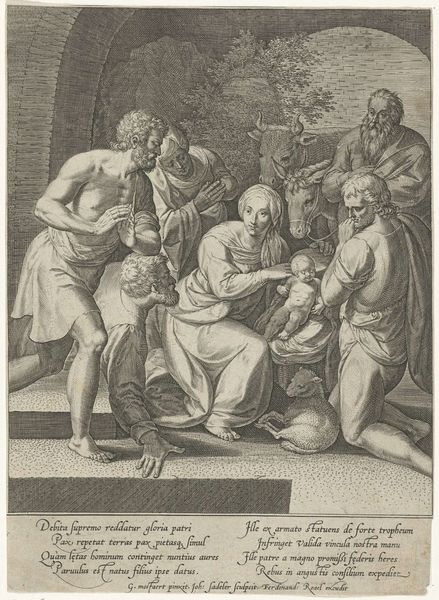
print, engraving
#
portrait
#
baroque
# print
#
figuration
#
history-painting
#
engraving
Dimensions: height 320 mm, width 265 mm
Copyright: Rijks Museum: Open Domain
Editor: This is Paul van Somer II’s “The Holy Family with the Young John the Baptist,” made sometime between 1670 and 1697. It’s an engraving, so a print, and it strikes me as a pretty standard depiction of a biblical scene. But, that’s just my initial read. How do you interpret this work? Curator: Standard, perhaps on the surface, but let’s dig deeper. Consider the historical context: the rise of printmaking democratized art. Suddenly, these scenes weren't just for the elite. How does this impact the image’s message, do you think? Editor: I suppose it means the artist wanted it to appeal to a wider audience. Maybe that accounts for its seemingly straightforward presentation? Curator: Precisely. Think about what a "holy family" represents – idealized relationships, power dynamics, gender roles. Now view this through a feminist lens. Notice Mary’s serene passivity versus Joseph’s contemplative stance. Is this a reflection of societal expectations of the time, or is van Somer subtly subverting them? Editor: It definitely feels like a reflection. Joseph looks thoughtful, almost like he is in charge of decisions. And Mary seems content and quiet. But wouldn’t the patrons want to feel a sense of tradition respected? Curator: Absolutely, and it served the agenda of those patrons to solidify this image of domestic tranquility with established, hierarchical gender roles. Note also how John the Baptist is included, linking these figures. Consider what that signifies about their intertwined destinies in a patriarchal structure? Editor: So it's not just a sweet family picture. It is also commenting on religion, class, and gender all at once through these depictions. Curator: Exactly. Art is never created in a vacuum. The socio-political context shapes the message, whether intentionally or not. Hopefully you agree that viewing artwork as a kind of mirror can highlight complex truths about the period in which it was created. Editor: That’s a totally different lens through which to look at this piece; it is so interesting how much richer the viewing experience becomes. Thanks for showing me new approaches.
Comments
No comments
Be the first to comment and join the conversation on the ultimate creative platform.
